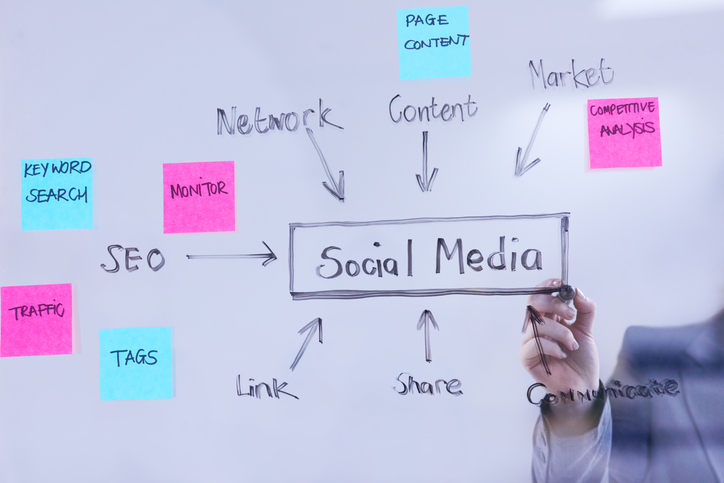
Social media has become an indispensable tool for nonprofit organizations in today’s digital age. It offers unprecedented opportunities to engage with communities, amplify your message, and drive impactful change. However, navigating this rapidly evolving landscape requires strategy, creativity, and a keen understanding of your audience.
The Power of Social Media for Nonprofits
Social media platforms like Facebook, X (formerly Twitter), Instagram, and LinkedIn have transformed how nonprofits connect with their supporters. Here are a few reasons social media is crucial for nonprofit engagement:
Strategies for Effective Engagement
To harness the full potential of social media, consider the following strategies:
1. Define Your Goals: Before you begin posting, outline clear objectives for what you want to achieve. Whether it’s increasing awareness, boosting donations, or growing your volunteer base, having clear goals will guide your content strategy.
2. Know Your Audience: Understand who your audience is and tailor your messaging to their interests and preferences. Use analytics tools to gain insights into your followers’ demographics and engagement patterns.
3. Craft Compelling Content: Create content that resonates with your audience. Use storytelling to highlight personal stories of those impacted by your work, share success stories, and showcase behind-the-scenes glimpses of your organization’s efforts.
4. Leverage Visuals: Visual content is more likely to be shared and remembered. Use images, infographics, and videos to grab the viewer’s attention and communicate your message more effectively.
5. Engage Actively: Social media is not just about broadcasting messages; it’s about fostering dialogue. Respond to comments, engage in conversations, and show appreciation for your supporters’ contributions.
6. Collaborate and Network: Partner with influencers and other organizations to expand your reach. Cross-promotions can introduce your cause to new audiences.
7. Monitor and Adapt: Regularly review your social media performance to understand what is working and what items may need improvement. Be ready to adapt your strategy based on these insights.
Overcoming Challenges
While social media offers numerous opportunities, it also presents challenges such as managing negative feedback, keeping up with platform changes, and balancing time and resources. It’s important to have a crisis management plan and a dedicated team or volunteer to monitor and manage your social media presence.
Social media holds immense potential for nonprofits to engage more deeply with their communities and drive their missions forward. By implementing strategic, audience-focused approaches, your organization can create meaningful connections and foster long-term support.
Ready to learn more? Read more UST blogs here on how we can help support the growth of your nonprofit.

Question: It seems like we’ve had a lot of candidates ghosting us recently. Is there anything we can do to prevent this?
Answer: Nothing you do will prevent ghosting altogether, but there are steps you can take to keep candidates engaged and discourage them from just disappearing on you:
This Q&A does not constitute legal advice and does not address state or local law.
This Q&A was provided by Mineral, powering the UST HR Workplace. Have HR questions? Sign your nonprofit up for a FREE 60-day trial here. As a UST member, simply log into your Mineral portal to access live HR certified consultants, 300+ on-demand training courses, an extensive compliance library, and more.

Ever since the Great Resignation reared its head in 2021, nonprofits have been struggling to recruit and retain staff. The nonprofit sector thrives on passion and purpose. Employees dedicate their time and energy to causes they care about and are often driven by a desire to make a difference. However, passion alone isn’t enough to sustain long-term commitment or satisfaction in their roles. Just like their counterparts in the for-profit world, opportunities for growth and development help nonprofit employees stay engaged, feel valued, and continue to contribute at a high level.
On the surface, employee development is straightforward: Train employees to improve their existing skillset and build new skills on top of that. But there are benefits beyond training. Employee development is also a way to maintain the success of organizations for the future. As organizations continue to grow, or as Baby Boomers retire and leave, existing employees are the key to keeping organizations stable and engaged in their communities.
There are multiple benefits that can result from creating an organization that prioritizes employee development.
The 2024 Workplace Learning Report from LinkedIn Learning notes that providing learning and development opportunities is the number one retention strategy executives planned to implement in 2024, with studies showing that companies with a learning culture have a 57% higher retention rate than companies that don’t. There are several ways to develop talent among your existing pool of employees. Some of the most impactful forms of employee development are free or cost little to provide – which is a plus for nonprofits which oftentimes have limited funds for training and development.
There are many ways to add to and advance the skillsets of employees—thereby having a long-lasting impact on your workforce and the long term success of your nonprofit.
Whether it’s through formal training programs, mentorship or leadership development, nonprofits can create a culture that prioritizes the growth and development of their staff. The long term benefits of encouraging development will ultimately benefit the organization through employee satisfaction, retention, and organizational success. Investing in people is investing in the future of the nonprofit itself.
UST understands that employee retention is critical in helping nonprofits achieve their missions. Leveraging the right strategies and building skill sets helps nonprofits retain engaged employees which leads to a more successful mission. For more ideas on ways to up-skill your valued employees, take advantage of UST’s Free 60-day HR Trial. UST HR Workplace is a dynamic cloud-based platform offering HR tools, templates, and trainings.
Sources:
How Professional Development Can Boost Employee Engagement – Wharton Online (upenn.edu)
https://learning.linkedin.com/resources/workplace-learning-report
https://ditasolutions.com/articles/the-role-of-training-in-employee-engagement-and-retention

In today’s evolving nonprofit sector, fostering diversity and inclusion within the workforce is not just a moral imperative but also a strategic advantage. While the sector is racially diverse, there remains a significant gap in leadership representation. This blog post will explore the current state of workforce diversity in nonprofits, the benefits of a diverse and inclusive workforce, and practical steps your organization can take to close the diversity gap.
The Diversity Gap in Nonprofit Leadership
Despite the nonprofit sector’s overall diversity, leadership ranks do not reflect this variety. According to data from 59,550 public charities that shared demographic data between July 2019 and January 20241:
This suggests that while people of color are well-represented at the staff level, they are disproportionately confined to smaller organizations and underrepresented in larger, wealthier nonprofits. The discrepancy raises important questions about biases in hiring practices and opportunities afforded to white individuals early in their careers.
Benefits of a Diverse and Inclusive Workforce
A diverse and inclusive nonprofit workforce offers numerous benefits:
Six Steps to Building a Diverse and Inclusive Workforce
1. Conduct a Diversity Audit: Start by assessing your current diversity levels at all organizational levels. Identify gaps and areas for improvement to set clear, measurable goals.
2. Foster an Inclusive Culture: Create an environment where all employees feel valued and included. Encourage open dialogue about diversity and inclusion and implement policies that support a respectful and collaborative workplace.
3. Revise Recruitment and Hiring Practices: Ensure your recruitment processes attract diverse candidates. Use blind recruitment techniques to minimize biases and create diverse hiring panels to make more inclusive hiring decisions.
4. Provide DEI Training and Development: Educate your staff about the importance of diversity, equity, and inclusion. Offer regular training sessions and workshops. UST HR Workplace offers 300+ employee training courses, including DEI training and awareness.
5. Establish Mentorship and Sponsorship Programs: Support underrepresented groups by establishing mentorship and sponsorship programs. These initiatives can help emerging leaders gain the skills and networks they need to advance in their careers.
6. Monitor Progress and Accountability: Regularly review and report on diversity and inclusion metrics. Hold leadership accountable for progress toward diversity goals and celebrate successes along the way.
Building a diverse and inclusive nonprofit workforce is crucial for creating impactful and sustainable change. By taking intentional steps to promote diversity and inclusion, your organization can improve its effectiveness and better serve the communities it aims to support.
Are you ready to transform your nonprofit workforce? Click here to start your free 60-day trial of UST HR Workplace. Access not only 300+ employee training courses, but live certified HR experts, an online employee handbook builder and much more.
Join us on this vital mission to champion diversity and inclusion within the nonprofit sector. Together, we can create a more equitable future for all.
Source

Question: We would like to add a working interview to our selection process. Is this permitted and are there other options to help us finalize our selection?
Answer: Yes, you can have a working interview as part of your selection process, but there’s a big caveat. If you have the candidate do “real work” that is useful to your business, you’ll need to hire them as a temporary employee, have them complete new hire paperwork, pay them at least the minimum wage, and then jump through any termination hoops if you don’t hire them. You can’t lawfully classify them as an independent contractor for this purpose. Here are a few more things keep in mind:
If you’d prefer to avoid the hassle of hiring candidates as temporary employees, there are alternatives that can yield similar results. Here are two we recommend:
This Q&A does not constitute legal advice and does not address state or local law.
This Q&A was provided by Mineral, powering the UST HR Workplace. Have HR questions? Sign your nonprofit up for a FREE 60-day trial here. As a UST member, simply log into your Mineral portal to access live HR certified consultants, 300+ on-demand training courses, an extensive compliance library, and more.

It’s no secret that many employees are thinking about changing jobs these days. In fact, research from Microsoft and LinkedIn says that almost half of American workers are considering a switch to a new job in 2024. That’s even higher than the numbers seen during the “Great Resignation” during 2022. While budget limitations are a reality for nonprofit organizations, supporting mental wellness efforts can help create a supportive environment where a strong sense of belonging helps outweigh a smaller paycheck. HR professionals working at nonprofits can help build higher employee satisfaction and boost retention by implementing four strategies designed around mental health.
What does that look like in real-world terms? The answers are reducing stress, fostering meaningful connections within your organization and the greater community, encouraging physical activity and providing opportunities for employees to grow and shine on the job.
Here are four ways HR professionals can achieve these goals within a nonprofit organization:
1. Give employees an outlet for their stress through an Employee Assistance Plan (EAP): EAPs give your employees an opportunity to proactively access mental and emotional support before major issues develop.
IMPORTANT: HR professionals need to do their homework when picking an EAP. Things to look at include cost per visit, how many visits will be covered and the ROI for the organization.
2. Help employees build meaningful connections through Employee Resource Groups (ERGs): ERGs allow employees with shared identities or backgrounds to connect and create a stronger feeling of belonging.
3. Encourage physical activity to help strengthen mental health: Exercise has long been associated with higher levels of mental health. It provides stress relief and enhances overall well-being.
4. Give employees opportunities to shine on the job and help them build new skills to boost their career: Research shows that employees who rate themselves as “thriving” in their job because their efforts are recognized, and they have opportunities to build new skills are three times less likely to switch jobs.
For most nonprofits, focusing on financial compensation just isn’t a winning strategy when it comes to employee retention. Incorporating higher levels of mental health benefits which build a sense of belonging and employee engagement, on the other hand, can be a solid strategy to help you retain the key contributors to your organization.
UST understands the pressure nonprofits face when it comes to employee retention. For more ideas on ways to build a benefit package that includes solid mental and emotional rewards for your valued employees, take advantage of UST’s Free 60-day HR Trial. UST HR Workplace is a dynamic cloud-based platform offering HR tools, templates, and trainings. It empowers nonprofit employers to cultivate a safe, compliant, and productive workplace environment.
RESOURCES:
https://www.gallup.com/workplace/358082/struggling-suffering-employees-twice-likely-leave.aspx

In the nonprofit sector, high turnover rates can disrupt organizational stability, morale, and mission effectiveness. A robust and supportive work culture is crucial for retaining dedicated staff and ensuring long-term success. According to Forbes, “The government reported a record number of Americans, 70 million, left their jobs in 2021, including 47.8 million departures counted as voluntary. This “Great Resignation” has left employers scrambling to fill vacancies, a problem that could get worse before it gets better.” This blog post explores the importance of cultivating a positive nonprofit work culture and offers actionable strategies to combat turnover.
Understanding the Challenge
Unlike the for-profit world, where financial incentives might be more prominent, nonprofit employees are often driven by passion and commitment to a cause. While this dedication is invaluable, it doesn’t shield nonprofits from the challenges of employee retention. High turnover can stem from burnout, lack of recognition, limited career growth opportunities, and inadequate support systems.
The Importance of a Supportive Work Culture
A supportive work culture in nonprofits fosters an environment where employees feel valued, heard, and empowered. It can lead to higher job satisfaction, better team collaboration, and enhanced productivity. Most importantly, it helps retain top talent, thereby reducing turnover rates and ensuring the continuity of the organization’s mission.
Benefits of a Positive Nonprofit Work Culture
Building a supportive work culture in nonprofits is not just a nice-to-have, it’s a necessity for retaining passionate and dedicated staff. By prioritizing employee well-being, fostering open communication, recognizing contributions, investing in development, encouraging team building, leading by example, and ensuring fair compensation, nonprofit leaders and HR managers can create an environment where employees thrive.
Ready to take the first step towards building a more supportive work culture in your nonprofit? Start by assessing your current practices and identifying areas for improvement. Remember, a little effort goes a long way in making your organization a place where employees are happy, engaged, and committed to making a difference.
Click here to read more blogs on how to support your team’s mental health.
Source

Question: What can we do to reduce turnover and retain employees?
Answer: High turnover can quickly become costly. We recommend the following practices to increase retention:
This Q&A does not constitute legal advice and does not address state or local law.
This Q&A was provided by Mineral, powering the UST HR Workplace. Have HR questions? Sign your nonprofit up for a FREE 60-day trial here. As a UST member, simply log into your Mineral portal to access live HR certified consultants, 300+ on-demand training courses, an extensive compliance library, and more.

Most nonprofit employees bring a passion to their work. They strongly believe in the mission of their organization and generally pour their heart and soul into their jobs daily.
While this higher level of dedication can be a blessing to your nonprofit, it might also drain the mental health reserves of those same hard-working employees. After all, even batteries need to be recharged.
The emotional well-being of employees – especially for those on the frontlines of your organization – works in much the same way:
It can quickly add up to a mental health crisis for nonprofit employees. Here are five practical solutions your organization can implement to make a difference for your employees.
1. Train managers on mental health issues and the resources available. Your managers and frontline supervisors are often the key to implementing new policies and creating a supportive atmosphere.
Studies show that training supervisors and managers about employee wellness and mental health helps those staff members better support their employees and more quickly identify signs of stress and mental health issues.
And, it doesn’t have to eat up a lot of their time. As little as 3 hours of training can help increase awareness of mental health and make your managers and supervisors more motivated to promote mental wellbeing for their employees.
2. Increase employee options for autonomy and flexibility. Giving employees more control over how and when they do their job can directly increase satisfaction and mental health. An employee who feels empowered to do their job without excessive oversight is often more motivated – which can lead to enhanced performance for your organization.
At the same time, certain employees may value job flexibility over other options due to their family circumstances. A frontline employee with small children might appreciate the opportunity to take advantage of remote working options if their job doesn’t require in-person meetings with your nonprofit’s audience.
3. Regularly share what mental health benefit options are available utilizing multiple channels. If mental health benefits are only communicated during your nonprofit’s open enrollment window, they’re not likely to be front of mind or highly utilized when employees might need them.
Instead, make it a priority to post flyers in employee break rooms about your mental health care options (or free options from organizations such as the National Alliance on Mental Illness [NAMI]).
Encourage managers to highlight mental health care benefits as they see employees facing challenging situations. And to help eliminate the stigma of using mental health benefits, ask the leaders of your nonprofit to communicate the importance of using available benefits to help all employees feel more comfortable reaching out for help when they’re stressed or overwhelmed.
4. Emphasize work/life balance and self-care. Your employees bring a passion to their job. They feel a sense of urgency to serve your community and make a difference. Many work long hours, take on additional responsibilities outside of the scope of their job or feel they need to be available 24/7.
But that constant level of commitment often cannot be sustained without a healthy work/life balance. Emphasizing things like family time, making exercise a priority, getting enough sleep and taking care of themselves in general are great ways to help your employees switch off and recharge.
5. Be mindful of burnout and actively intervene to help employees take a break from stressful situations. Burnout is a real concern – especially for many of the top performers at your nonprofit. In a 2023 McKinsey survey of nonprofits, 88% of them reported stress levels at the “orange” or “red” level. In those circumstances, burnout is a common result.
Nonprofit work can be a balancing act. The passion your employees bring to their jobs can be extremely fulfilling. But at the same time, it can lead to emotional exhaustion – especially when dealing with challenging or unchanging social situations.
Encourage managers and frontline supervisors to pay attention to employees working at an exceptionally high level for an extended period. Provide them with extra flexibility to step away from their job functions for a few days. Think of flexible ways you can reward them with work/life balance solutions to show your appreciation for their hard work.
Prioritizing mental health shows your employees you value their contributions. It’s a smart way to reward the passions they bring to your cause … while helping your nonprofit function at the highest levels.
UST can help you focus on your mission while supporting your HR and financial needs. Take advantage of UST’s Free 60-day HR Trial and discover how we can help your nonprofit manage your employees’ mental health needs. With UST HR Workplace, access Live Certified HR Experts, Work-from-Home Resources, 300+ Employee Training Courses, Thousands of Downloadable Forms & Checklists, an Online Employee Handbook Builder, and Job Description Tools. Our HR support lightens your workload, promoting better mental health so you can focus on what truly matters – your mission.
RESOURCES:

Nonprofit professionals are the backbone of countless community initiatives and philanthropic efforts, often going above and beyond to make a difference. However, this dedication can lead to a hidden threat: burnout. While passion drives many in the nonprofit sector, it can also lead to mental and physical exhaustion. We aim to shed light on nonprofit burnout and offer actionable strategies for mental wellness.
Understanding Nonprofit Burnout
Burnout is a state of emotional, physical, and mental exhaustion caused by prolonged stress. For nonprofit professionals, burnout can manifest as fatigue, irritability, reduced performance, and feelings of helplessness.
Why Nonprofit Professionals are Prone to Burnout
Mental Wellness Strategies for Nonprofit Professionals
To combat burnout, it’s crucial to adopt strategies that promote mental wellness. Feeling overwhelmed and on the verge of burnout? You’re not alone. The demands of the nonprofit sector can be immense. Here are six actionable strategies to combat burnout and prioritize your mental well-being, allowing you to continue making a positive impact with renewed energy and focus.
1. Prioritize Self-Care: Self-care isn’t a luxury; it’s a necessity. Regular exercise, a balanced diet and sufficient sleep can significantly improve your mental and physical health.
2. Set Boundaries: Create clear boundaries between work and personal life. Set specific work hours and stick to them. Turn off work notifications after hours to ensure you have time to recharge.
3. Delegate Tasks: You don’t have to do everything yourself. Trust your team and delegate tasks where possible. This not only reduces your workload but also empowers your team members.
4. Seek Professional Help: If you’re struggling with burnout, don’t hesitate to seek professional help. Therapists and counselors can provide coping strategies and a safe space to express your feelings.
5. Foster a Supportive Work Environment: Cultivate a culture within your team that fosters open communication. Encourage your coworkers to comfortably share their struggles and seek support.
6. Continuous Learning: Engage in employee training courses to enhance your skills and stay updated. This can help you feel more competent and confident in your role.
While burnout in the nonprofit sector is a serious issue, it is not insurmountable. By prioritizing mental wellness and adopting the strategies outlined above, nonprofit professionals can continue to make a positive impact without sacrificing their well-being.
Are you ready to take the next step in supporting your mental wellness and organizational efficiency? Sign up for UST’s free 60-day HR trial today! Gain access to live certified HR experts, work-from-home resources, over 300 employee training courses, downloadable forms and checklists, an online employee handbook builder, and job description tools.
Get started with your free trial now!
Remember, taking care of yourself is the first step in taking care of others.

UST maintains a secure site. This means that information we obtain from you in the process of enrolling is protected and cannot be viewed by others. Information about your agency is provided to our various service providers once you enroll in UST for the purpose of providing you with the best possible service. Your information will never be sold or rented to other entities that are not affiliated with UST. Agencies that are actively enrolled in UST are listed for review by other agencies, UST’s sponsors and potential participants, but no information specific to your agency can be reviewed by anyone not affiliated with UST and not otherwise engaged in providing services to you except as required by law or valid legal process.
Your use of this site and the provision of basic information constitute your consent for UST to use the information supplied.
UST may collect generic information about overall website traffic, and use other analytical information and tools to help us improve our website and provide the best possible information and service. As you browse UST’s website, cookies may also be placed on your computer so that we can better understand what information our visitors are most interested in, and to help direct you to other relevant information. These cookies do not collect personal information such as your name, email, postal address or phone number. To opt out of some of these cookies, click here. If you are a Twitter user, and prefer not to have Twitter ad content tailored to you, learn more here.
Further, our website may contain links to other sites. Anytime you connect to another website, their respective privacy policy will apply and UST is not responsible for the privacy practices of others.
This Privacy Policy and the Terms of Use for our site is subject to change.
UST maintains a secure site. This means that information we obtain from you in the process of enrolling is protected and cannot be viewed by others. Information about your agency is provided to our various service providers once you enroll in UST for the purpose of providing you with the best possible service. Your information will never be sold or rented to other entities that are not affiliated with UST. Agencies that are actively enrolled in UST are listed for review by other agencies, UST’s sponsors and potential participants, but no information specific to your agency can be reviewed by anyone not affiliated with UST and not otherwise engaged in providing services to you except as required by law or valid legal process.
Your use of this site and the provision of basic information constitute your consent for UST to use the information supplied.
UST may collect generic information about overall website traffic, and use other analytical information and tools to help us improve our website and provide the best possible information and service. As you browse UST’s website, cookies may also be placed on your computer so that we can better understand what information our visitors are most interested in, and to help direct you to other relevant information. These cookies do not collect personal information such as your name, email, postal address or phone number. To opt out of some of these cookies, click here. If you are a Twitter user, and prefer not to have Twitter ad content tailored to you, learn more here.
Further, our website may contain links to other sites. Anytime you connect to another website, their respective privacy policy will apply and UST is not responsible for the privacy practices of others.
This Privacy Policy and the Terms of Use for our site is subject to change.